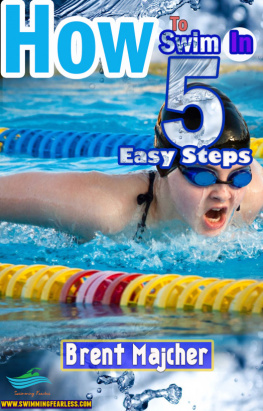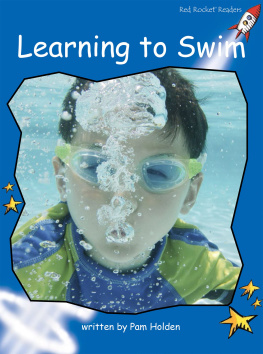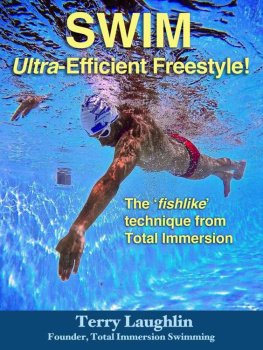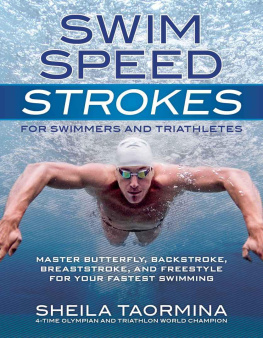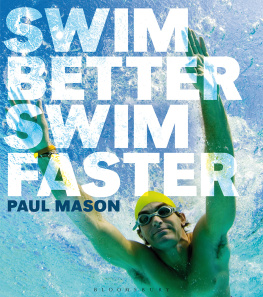Contents
Guide
Page List
Also by Bonnie Tsui
American Chinatown: A Peoples History
of Five Neighborhoods
Why We Swim

Bonnie Tsui

ALGONQUIN BOOKS OF CHAPEL HILL 2021
For Felix and Teddy, my water babies
Contents

SURVIVAL

An old map from when this place was first settled shows monsters everywhere, once the shore gives out...
Carl Phillips, Swimming

One night over dinner, my husband tells me a story he heard about a boat in the North Atlantic and a man who should have drowned. Late on the evening of March 11, 1984, a fishing trawler was working on calm seas three miles east of the island of Heimaey, part of an archipelago off the south coast of Iceland. The sky was clear, the air a wintry twenty-eight degrees Fahrenheit. There were five crew aboard the vessel. Gulaugur Frirsson, the boats mate, was just twenty-two years old; he had taken a break and was asleep below deck when he was woken up by the cook, who told him the trawling gear had snagged on the sea bottom. Soon after Frirsson arrived on deck, he saw that the crew were trying to winch up the gear. One of the trawl wires was taut over the side, pulling the boat over so far that the sea had begun to wash through the railings. Frirsson shouted a warning. The captain, Hjrtur Jnsson, gave instructions to slacken the winch, but then it jammed. A swell ran under the boat, overturning it, and the sailors found themselves pitched into the freezing sea.
Two of the men drowned almost immediately, but the remaining three, including Frirsson, managed to grab hold of the boats keel. The vessel quickly began to sink, and they could not release the emergency raft. In the forty-one-degree water, they would have less than half an hour before hypothermia claimed them. The three began to swim toward the shore. Within minutes, only two remained: Jnsson and Frirsson.
The two men called to one other as they swam, to spur each other on. Then Jnsson stopped responding. Frirsson, wearing blue work pants, a red flannel shirt, and a thin sweater, kept swimming, and found himself talking to seagulls to stay awake. A boat came within three hundred and fifty feet of him and he shouted as loud as he could, but it sailed away. He swam backstroke, his eyes trained on the lighthouse at the southern end of the island. Eventually he heard the surf crashing on the coast. He prayed he would not get obliterated on the rocks. He found himself up against the base of a steep cliff, exhausted and terribly thirsty, unable to feel any of his extremities. With no way to climb up, he turned back to the sea, adjusted course, and swam farther south, where he came ashore and made his way slowly across a spiky, snow-covered lava field over a mile into town, stopping to punch through an inch-thick layer of ice on a sheep cistern to get a drink of water. When he finally arrived in town, it seemed to him a splendid dream-vision of life; he knocked on the door of the first home he saw with lights on. He was barefoot and covered in frost. Behind him was a trail of bloody footprints on the sidewalk leading up to the house.
This is a true story. In the end, Frirsson survived six hours in frigid seas and swam more than three and a half miles to land. When he arrived at the hospital, doctors were unable to discern his pulse. And yet he showed no signs of hypothermia, only dehydration.
Frirssons body, it turns out, resembled a seals. Researchers later determined that he was insulated by fourteen millimeters of fattwo or three times the normal human thickness, and more solid. This man was more marine mammal than terrestrial. He had a biological quirk that saved him: it kept him warm, buoyant, and able to keep swimming. Many called him a real-life selkiethat half-man, half-seal figure of Icelandic and Scottish lore. To me, he is a living reminder that we are not so far removed from the sea.
As humans, we walk the earth. We are land creatures with an aquatic past. Im drawn to stories like Frirssons because I want to know what remains of that past, today. In a way, all swimming storiesfrom the naiads of Greek myth to the long-distance swimmer Diana Nyad, who swam from Cuba to Florida in 2013are attempts to reacquaint our land-adapted selves with water. We humans are not natural-born swimmers, but we have figured out ways to reclaim abilities that existed before that land-sea split in our evolution, hundreds of millions of years ago.
Why do we swim, when evolution has shaped us to excel on land by running down prey until it drops from exhaustion? Of course it has to do with survival: Somewhere along the way, swimming helped us to get from one prehistoric lakeshore to another and escape predators of our own; to dive for that trove of bigger shellfish and get to new sources of food; to venture across oceans and settle new lands; to navigate all manner of aquatic perils and see swimming as a source of joy, pleasure, achievement. To arrive at this day, to talk about why we swim.
This book is an investigation of what seduces us to water, despite its dangers, and why we come back to it again and again. Its clear to me that once we can swim for survival, swimming can be so much more. The act of swimming can be one of healing, and healtha way to well-being. Swimming together can be a way to find community, through a team, a club, or a shared, beloved body of water. We have only to watch each other in water to know that it creates the space for play. If we get good enough at the thing, it can be an engine of competitiona way to test our mettle, in the pool or open water. Swimming is about the mind, too. To find rhythm in the water is to discover a new way of being in the world, through flow. This is about our human relationship to water and how immersion can open our imaginations.
More than 70 percent of the planet is covered by water; 40 percent of the global population lives less than sixty miles from the coast. This book is for swimmers and curious humans of every stripe and age, whether you are drawn to water for speed or distance or transcendence. This is for those who heed the siren call of the water. Its also for those of us who seek to understand ourselves, that lost, quiet state of just beingno technology, no beepsdating back to our watery human origins.
We choose to put ourselves in all kinds of waters: oceans, lakes, rivers, streams, pools. We even have a romance with lifeguards, the custodians of those places. At the intersection of these things, my family story beginsand not just because my mother and father met in a swimming pool in Hong Kong.
I learned to swim when I was five years old, for the simple reason that my parents didnt want me to drown: in the bath, in the neighbors backyard pool, at the beach. As a kid at Jones Beach, New York, I spent a lot of time in the four feet of water at the scalloped, lacy edge of the Atlantic. I can picture the scene clearly: My brother and cousins and I bob up and down in the shallows, waiting for a wave to come and lift us off our feet. We use our arms as rudders to pilot us along the face of a wave as it breaks, depositing us at the foamy intersection where water meets sand. Get up, laugh, repeat.




